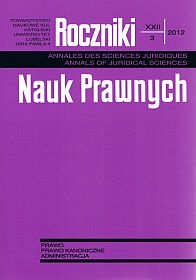Direct and Indirect Types of Discrimination as Legal and Social Problems
Abstract
The goal of the article is to present legal regulations regarding direct and indirect discrimination, and discuss discrimination as a social problem. Direct discrimination occurs in the individual relation between an employee and his or her employer, or between a job-seeker and a potential employer. Such discrimination exists when an employer disadvantages an employee by presenting a biased attitude to his or her situation which is mentioned in Article 183a of the Labour Code. Under Art. 18 [3a] § 4, indirect discrimination occurs when as a result of an apparently neutral decision, criterion or action, unfavourable disproportion or a particularly adverse situation occurs or may have occurred regarding establishment or termination of one's employment, conditions of employment, promotion, and access to training to raise one's qualifications, affecting all or a majority of employees who belong to a particular group.
Apart from numerous negative consequences of legal nature, discrimination contributes to a degradation of both physical and mental condition. It is a factor that contributes to depression, increased divorce rate and other forms of pathology.
Copyright (c) 2012 Roczniki Nauk Prawnych

This work is licensed under a Creative Commons Attribution-NonCommercial-NoDerivatives 4.0 International License.


